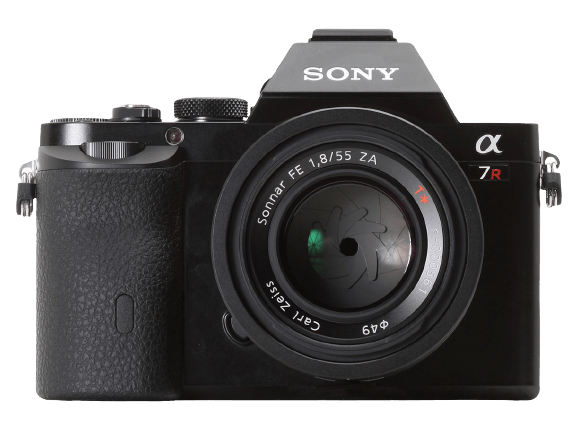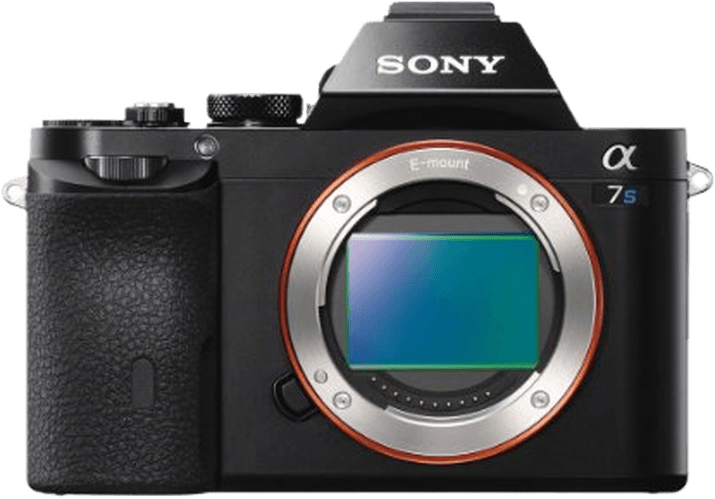Sony a7R vs a7S Comparison
Sony a7R

Sony a7S

Comparing the Sony a7R and the Sony a7S, the a7R comes out ahead with a score of 65/100, while the a7S scores 55/100. Both cameras are mirrorless and were released in 2013 and 2014, respectively. They share the same dimensions (127 x 94 x 48mm) and similar weights (a7R: 465g, a7S: 489g).
The Sony a7R is superior due to its higher score and lower launch price ($2300 compared to the a7S’s $2499). However, the Sony a7S has an advantage in terms of its release year, being a more recent model.
Despite the differences, both cameras offer quality performance in their respective areas. The a7R stands out for its overall value, while the a7S may cater to those seeking a newer model.
Sony a7R vs a7S Overview and Optics
The Sony a7R outperforms the Sony a7S in optics with a score of 74/100 compared to 60/100. Both cameras share several specifications, such as the CMOS sensor type, Bionz X processor, full-frame sensor size, Sony FE lens mount, and the absence of image stabilization. However, the differences in megapixels, shooting speed, and DXOMARK sensor score contribute to the varying performance in optics.
The Sony a7R excels with its higher megapixel count of 36, resulting in sharper and more detailed images. This feature is especially beneficial for photographers who require high-resolution images for large prints or cropping flexibility. Moreover, the a7R achieves a superior DXOMARK sensor score of 95, indicating better overall image quality and low-light performance compared to the a7S’s score of 87.
On the other hand, the Sony a7S has a slight advantage in shooting speed, offering 5 frames per second (fps) compared to the a7R’s 4 fps. This faster shooting speed may be more suitable for photographers capturing fast-moving subjects or those who prioritize continuous shooting capabilities.
Considering the optics, the Sony a7R emerges as the better camera due to its higher megapixel count and superior DXOMARK sensor score, which contribute to enhanced image quality and low-light performance. While the Sony a7S has a faster shooting speed, the difference is minimal and may not significantly impact the overall shooting experience. Therefore, for photographers prioritizing optics, the Sony a7R is the more suitable choice.
Sony a7R vs a7S Video Performance
The comparison of video capabilities between the Sony a7R and Sony a7S reveals that both cameras have the same score of 56/100. This equal score suggests that these cameras have similar video features and performance.
Both the Sony a7R and Sony a7S share common video specifications. They have a maximum video resolution of Full HD and video dimensions of 1920 x 1080. Furthermore, both cameras can record at a maximum video frame rate of 60fps. Additionally, neither of the cameras have built-in time-lapse functionality.
While the video capabilities of both cameras are similar, each camera has its own advantages. The Sony a7R is known for its exceptional image quality and high-resolution sensor, making it an excellent choice for photographers who prioritize still image performance. On the other hand, the Sony a7S is recognized for its impressive low-light performance and high ISO range, which can be beneficial for videographers shooting in challenging lighting conditions.
Despite their similar video scores, the Sony a7S may be better suited for videographers who require low-light capabilities, while the Sony a7R might be more appropriate for photographers who value high-resolution still images. However, it is important to consider individual needs and preferences when selecting a camera, as both the Sony a7R and Sony a7S offer comparable video features.
In comparing the video capabilities of the Sony a7R and Sony a7S, it is evident that both cameras provide similar video performance, with neither camera outshining the other. Ultimately, the choice between these two cameras will depend on the specific requirements and preferences of the user.
Sony a7R vs a7S Features and Benefits
The Sony a7R wins in the comparison of features, with a score of 57/100, while the Sony a7S scores 54/100. Both cameras have a 3-inch screen, lack a touchscreen, have a flip screen, no GPS, and include WIFI capabilities. Neither camera has Bluetooth connectivity.
The Sony a7R outperforms the a7S in screen resolution, offering 1,230,000 dots compared to the a7S’s 921,000 dots. This difference results in a sharper and clearer display on the a7R, providing better image previews and menu navigation.
The Sony a7S, despite its lower feature score, has its advantages. Its lower resolution screen consumes less power, which can lead to longer battery life during extended shooting sessions. However, this advantage may not significantly impact overall performance and user experience.
In comparing the features of these two cameras, the Sony a7R emerges as the better option due to its higher screen resolution. This advantage contributes to an improved user experience when previewing images and navigating menus. The Sony a7S has the potential for longer battery life due to its lower resolution screen, but this advantage is not substantial enough to outweigh the benefits of the a7R’s higher resolution display.
Sony a7R vs a7S Storage and Battery
The Sony a7R and Sony a7S both have a storage and battery score of 21/100. These cameras share several specifications, including one memory card slot and compatibility with SD/SDHC/SDXC and Memory Stick Pro Duo/Pro-HG Duo cards. Both cameras also use the NP-FW50 battery type and lack USB charging capabilities.
The Sony a7S has a slight advantage in battery life, providing 380 shots per charge compared to the Sony a7R’s 340 shots. This difference may be beneficial for photographers who need longer shooting sessions without changing batteries.
On the other hand, the Sony a7R does not have any advantages in storage and battery specifications compared to the Sony a7S. Both cameras have the same limitations in terms of memory card slots and USB charging.
Considering the storage and battery aspects, the Sony a7S is marginally better due to its increased battery life. However, both cameras have identical storage capabilities, and neither offers USB charging.
Alternatives to the Sony a7R and a7S
Are you still undecided about which camera is right for you? Have a look at these popular comparisons that feature the Sony a7R or the Sony a7S:

